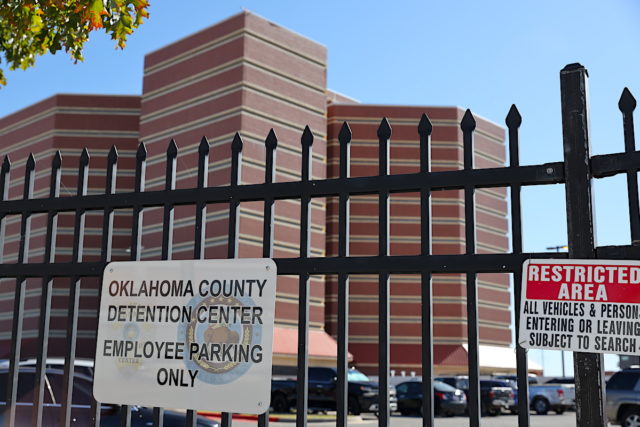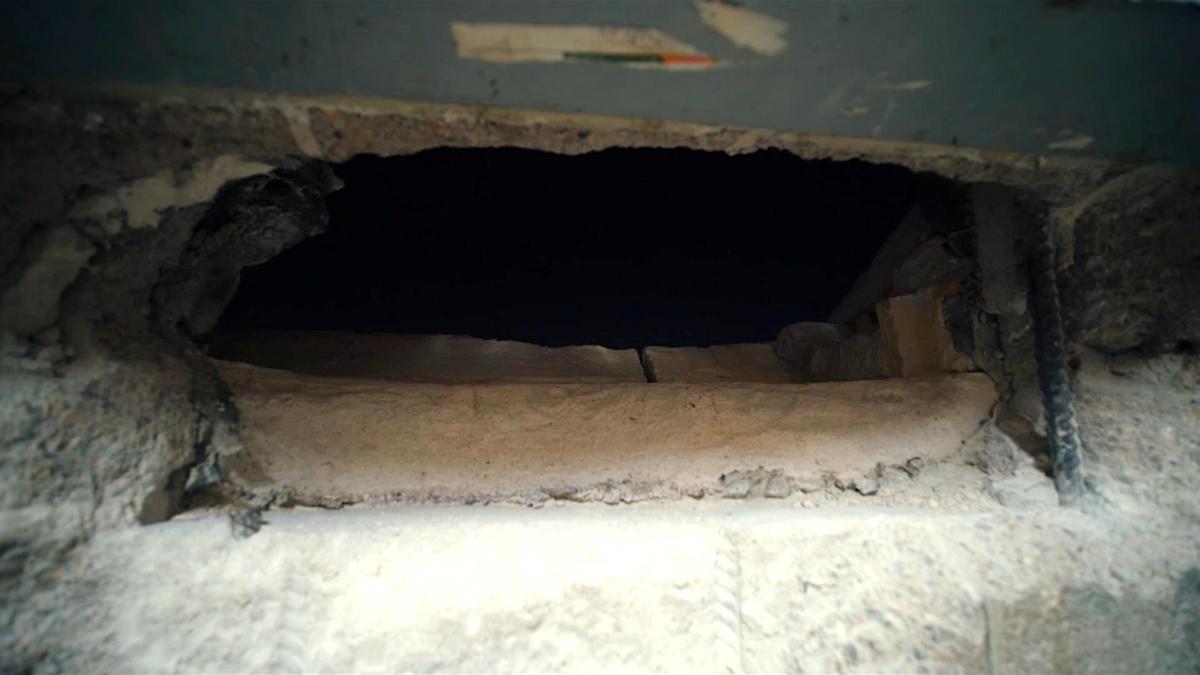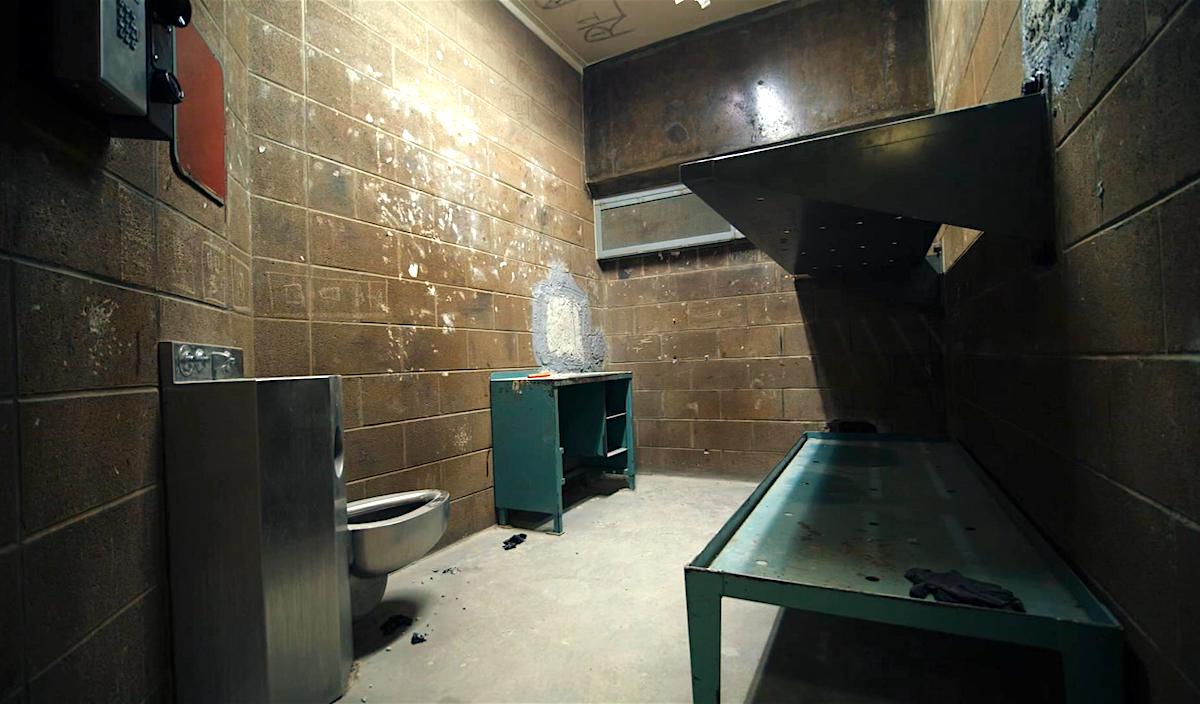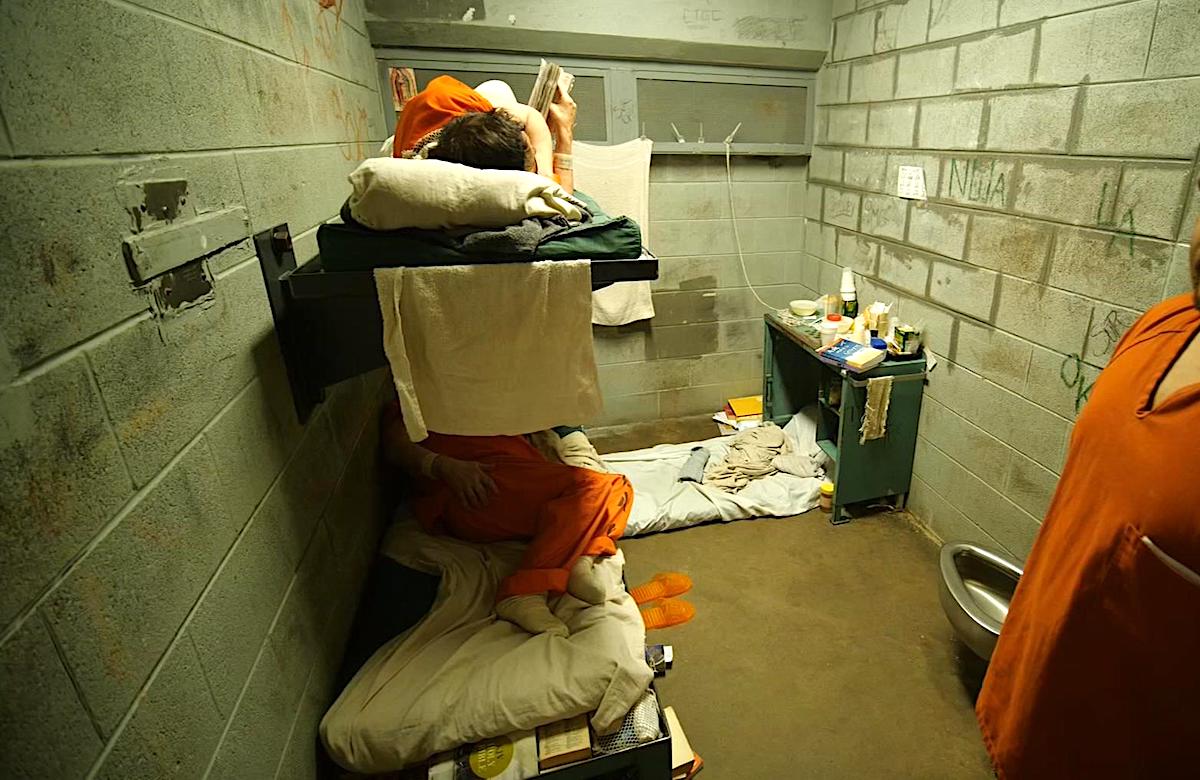
As a variety of elected and appointed leaders are considering the longterm future for the Oklahoma County Detention Center, two reports from state and federal agencies cast doubts on claims that conditions at the current jail facility are improving.
A federal agency’s May visit to examine conditions at the troubled downtown jail was summarized in a jarring 70-page report revealed here publicly for the first time. Similarly, an “unannounced follow-up inspection” on Oct. 21 and 22 by the Oklahoma State Department of Health found the jail to be “not in substantial compliance” with state regulations owing to “repeat deficiencies.”
The National Institute of Corrections report from May underscores significant problems within the facility, ranging from structural limitations and hygiene issues to compromised security and unattended exits. Among concerning observations emphasized in the report were:
- Unsupervised open doors to the jail;
- A lack of established checkpoints for incoming visitors, staff and contractors;
- ‘Disturbing” sanitation and poor conditions in housing units;
- Inmates cooking inside their cells;
- Insufficient staffing for the jail’s design;
- Scissors lying on a table in a release area;
- A lack of clear policies and procedures posted throughout the jail;
- Shower facilities with little to no lighting or curtains, as well as standing water;
- A lack of firearms for security personnel;
- Phones out of order in critical areas of the facility.
“Overall, the sanitation of the facility was very disturbing,” the NIC report states. “Given that we found that the emergency phone system does not function, and inmates are left alone overnight, inmate safety and jail security is in constant jeopardy.”
The NIC report was prepared by Timothy Ryan and Rollin Cook of Florida-based Ryan Correctional Consulting. The National Institute of Corrections is a federal agency created to provide assistance to state and local correctional agencies. According to Page 3 of the report, the evaluation was requested by the Oklahoma County Detention Center, and it was addressed to jail administrator Greg Williams.
“The NIC will not distribute the report to non-NIC entities or consider it an agency record of the federal FOIA, without the express written approval of the agency,” the report states on the same page, referring to the Freedom of Information Act, which allows media and the public to review government documents.
Ryan and his team, referred to as Technical Resource Providers (or TRPs) throughout the report, visited the jail May 18, 19 and 20. Their 70-page report describes a jail plagued by a vast array of problems and stands in contradiction to some claims that conditions have significantly improved since the Oklahoma County Criminal Justice Authority took over the jail’s operations in July 2020.
At the time of the TRPs’ visit, the jail was facing “immediate critical issues including severe water leaks throughout the building, no hot water, no air conditioning, staffing shortages, and much more of concern like holes between the cells large enough for inmates to crawl thru,” according to the report’s introduction.
The jail has also faced staffing challenges and “a high attrition rate with over 300 leaving in the last 11 months, the hiring of many new personnel with limited training and the removal by the previous Sheriff of critical operational information and equipment.”
The NIC report’s findings highlight a “multitude of issues” across all aspects of the jail, including security, sanitation, staffing and the general prevailing culture. It says addressing these issues will be “most challenging indeed.”
“None of the items, issues, thoughts, and considerations in this report are ‘easy fixes’ and clearly will require time,” the document notes. “However, if the OCDC creates a written roadmap for resolution much can be accomplished over the next several years.”
Activist to jail trust members: ‘Have you seen this?’

NonDoc obtained a copy of the NIC report from victim advocate Sara Bana, who spoke during Monday’s meeting of the Oklahoma County Criminal Justice Authority and criticized the jail’s governing body for continuing to house inmates in deplorable conditions.
“Have you seen this?” Bana asked OCCJA members. “I just mailed off three large packets of evidence against the unconstitutional patterns of practices of the county jail to the Department of Justice. Our hope is that they will immediately intervene.”
Bana declined to say how she obtained the NIC report, but she asked members of the OCCJA — colloquially called the jail trust — to accept her copy of the document and for it “to be placed on record.”
Bana and a half-dozen other citizens hurled criticism at the jail trust members Monday moments before the board unanimously approved a renewed contract with the City of Oklahoma City to house its police department’s detainees. Unlike Tulsa and many major American cities, Oklahoma City does not operate its own jail.
Bana and others said the OKC contract was inherently invalid because the Oklahoma County Jail has been found “not in substantial compliance” during inspections from the Oklahoma State Department of Health.
“No one in this room can truthfully say that the conditions inside the county jail today meet the standards of the federal, state and constitutional norms,” she said.
OCCJA Chairman Jim Couch said otherwise.
“This has been negotiated with the city over the last several months,” said Couch, a former OKC city manager. “The attorneys have signed off.”
Bana shouted at the jail trust members as she left the meeting room.
“Every death is on your hands,” she said. “You are responsible.”
Escape, deaths underscore impact of problems

The Oklahoma County Jail has been plagued by shortcomings since it opened in 1991. The transfer of management from the Oklahoma County Sheriff’s Office to a new “jail trust” in July 2020 was meant to alleviate those issues.
Oklahoma County Commissioner Brian Maughan heaped praise on the jail, its staff and the jail trust following a recent visit to the facility, his 21st as county commissioner. In a guest editorial for The Oklahoman on Oct. 24, Maughan noted improvements in access to hot water and the elimination of “noxious odors” within the facility.
“My tour was self-directed, meaning jail staff did not choose where we went or who we talked with,” he wrote. “From top to bottom, the Oklahoma County jail is a cleaner, safer place than it has ever been.”
Fellow County Commissioner Kevin Calvey shared Maughan’s editorial on Facebook, highlighting Maughan’s opinion that changes implemented by the jail trust “are paying real dividends.” Oklahoma County Assessor Larry Stein agreed, commenting that he recently toured the jail as well.
“The improvements and changes are evident,” Stein wrote.
Though some things, including the jail’s sewage system, have improved over the past year, plenty of problems continue to make headlines and cast doubts on the assessments of Maughan and others.
Just two weeks before Maughan’s editorial was published, a prisoner named Nicholas Leach escaped from the facility using a gate remote control stolen from a detention officer’s backpack. Leach was apprehended two days later.
On Oct. 30, detainee Craig Weeks was found unresponsive in his cell following what officials said was a suicide attempt. He was taken to a local hospital, where he later died. Weeks had been at the jail five days before his death. So far this year, nine inmates have died at the jail.
On Oct. 22, the Oklahoma State Department of Health conducted its latest unannounced follow-up inspection of the jail and documented a litany of “repeat deficiencies” related to documentation, sight checks, prescription medications and overall adherence to several written policies.
The 66-page OSDH “statement of deficiencies” also noted issues chronicled by the NIC report, including hardware failures in the jail’s emergency alert systems.
“Bright yellow signs (Access to Health Care) were observed posted in the inmate pods with instructions to dial zero for a life threatening emergency, however, zero does not work when tested,” the OSDH report says.
OSDH inspectors also found issues with camera sweeps, the distribution of razors and the provision of clean towels and bedding.
“Staff A reported clean bedding is exchanged once every six to seven weeks,” the OSDH report states.
The OSDH issues highlight a broader concern articulated in the NIC report from May. Although the jail’s physical facility has many issues, the NIC said problems exist regarding jail operations that would need to be addressed even with a new building.
“The discussion about building a ‘new jail’ or ‘annex’, although valuable, is 5-7 years in the future,” the NIC report says. “The jail’s operational and staffing problems need to addressed now to reach that new construction.”
Safety and security issues included open doors, cooking fires

The NIC report pointed out a number of issues that undermine the security of the Oklahoma County Jail and compromise the safety of inmates and staff.
For instance, the jail lacked a dedicated checkpoint for staff at the time of the consultant visit in May. A contractor observed near an elevator entrance was said to “look like an everyday person off the street. It could have easily been an inmate in stolen contraband.”
The report recommended that a system of color-coded badges be instituted to better identify those working inside the jail and those who had access to certain parts of the facility.
A garage door leading outside the facility was also observed to be left open, with no immediate supervision by staff, and provided an opportunity for escape by a knowledgeable inmate. A back gate leading to a maintenance yard was also observed to be open and unsupervised, according to the federal report.
Two pairs of scissors were seen out in the open in a release area inside the facility, and several smoke detectors were found to be out of order.
Meanwhile, the federally contracted NIC inspectors found evidence that inmates used open fire to heat water and cook.
“Of certain surprise to us was that both inmates and staff seemed (to) have accepted this as ‘approved,’” the NIC report says.
Additionally, the jail’s original design included telephones inside every cell that only connected to numbers within the facility and could be used in emergencies. The NIC report found the phones either completely absent from cells or not in working order throughout the facility, including in the jail’s 13th floor medical unit:
For example, the phones on the 13th floor pregnant inmate unit, the TRP’s asked the inmates to conduct a system test explaining that it was the middle of the night and their cellmate had gone into labor. She attempted two numbers that she had been told to use to no avail and then was advised of a third. Apparently, the third went to central control but was unanswered.
The NIC report noted a contract with Global Tel Link Corporation through 2023 for phone services.
“The contract covers all the housing floors,” the report states. “The TRPs could not understand why said corrections had not been made and signs placed over every phone identifying emergency contact numbers that function.”
Some employees to whom the federal consultants spoke lacked confidence in the Oklahoma County Jail’s safety and security.
“Multiple staff expressed significant concern with the lack of safety and security throughout the facility and [say] that it has gotten progressively worse since the sheriff left,” according to the report. “For example, not everyone is required to wear identification and they have witnessed multiple people in areas they should not be without proper escort. For example, a PIO (Public Information Officer) is allowed to go throughout the facility without any identification as well as speak to inmates without proper notice to the housing unit officers and leadership.”
Federal report recommends firearms for staff

The NIC report criticized the jail for not providing firearms for staff use.
“This seems unsafe in today’s weapons use environment,” the report says. “Since we are not in a position to dictate said policy, we do believe it is worthy of consideration to re-arm in the future. This is certainly because we were made aware that many of the staff are firearms qualified and could be used in emergencies. If approved, it should include quarterly training.”
Oklahoma County Detention Center spokesman Mark Opgrande said the jail does not currently have an armory.
Jail administrator Greg Williams, who has overseen the facility since the jail trust assumed operations, took issue with the NIC recommendation on guns.
“We really don’t have a need for firearms in the jail,” he said. “Our transport officers are certainly armed. But I’ve worked in a lot of prisons, and I’ve never been in one where officers are armed. Typically that’s seen as creating more of a risk than it does a help.”
Williams said that even when the Oklahoma County Sheriff’s Office ran the jail, guards did not carry firearms.
“These guys come from other jurisdictions in other parts of the country, and evidently in their particular state or area they’re familiar with, that’s what they do,” Williams said. “Again, it’s not based on any kind of practice. That’s based on a recommendation of those individuals.”
Sanitation inside called ‘disturbing’

Both the OSDH and NIC reports describe a facility riddled with structural issues and wear and tear that goes beyond typical usage.
The NIC report notes general clutter in several areas and refers to the overall sanitation inside the facility as “disturbing.” The consultants wrote:
All of the housing units we visited were in poor condition to include but not limited to cracked windows, cell and wall graffiti, disabled phones, and broken tables, chairs and kiosks. Water leaks could be seen as having been in units in multiple locations with stains everywhere. This has apparently caused ceilings to be corrupted, hanging down and stained. The shower areas were without lighting, unsanitary with drains clogged and holding standing water, and lacking proper hanging curtains for women and men.
The NIC report also noted food being left out unrefrigerated, mattresses that apparently were not cleaned between inmates, and issues with bed bugs, mice and roaches. On one occasion, a juvenile cell had a backed up sink and toilet while a prisoner was inside.
“However, the most disturbing were the holes made in the cell walls large enough to allow inmates to move without restriction from cell to cell in a line of inside pods,” the NIC report states.
Williams said the jail’s design flaws are to blame for the ease with which prisoners can carve up its walls.
“Unfortunately, when it was constructed, they used cinder block without concrete or reinforcement in the blocks used to build those cells, and they are quite easily compromised if you get them wet,” Williams said. “And in some cases you can break them even if you don’t get them wet. There are occasions when some detainees break out a block and you can repair it and they make another one right beside it, because it’s just a hollow block.”
Williams said staff members have been working on repairing long-broken electrical outlets in each pod that would allow for the introduction of microwave ovens for inmate use.
“That’s our biggest challenge, not having working outlets in a pod, but we’re eager to do that,” he said.
Williams also noted that water backup is often caused by clogged drains.
“Typically with the drainage problems, it’s trash. That’s where the standing water comes from,” Williams said. “It gets in the drains and clogs it. That’s not a structural thing. It’s an ongoing problem with trash going into the drains.”
Opgrande said renovations are ongoing and that many of the facility’s plumbing problems have been fixed since the May visit to the jail for the NIC report. The jail is divided into 28 pods spread over 12 floors. Pods are designated areas within the jail assigned to inmates and include cells and a common area.
“We have completed remodeling of several pods, which includes replacing light fixtures, repairing holes in cell walls, cleaning drains by adding new pipes in certain areas,” Opgrande said. “We’ve also added new locks to several pods. Once these are complete, we will move detainees in and then close down more pods for remodeling and repair.”
Changes recommended in supervision, procedures

The NIC report noted many procedural flaws at the Oklahoma County Jail.
It notes that the facility has no real inmate management in its current indirect supervision model and recommends the jail move to a direct supervision system, so that detainees can take “ownership” of their areas in an effort to improve sanitation and security.
Direct supervision is a system of incarceration where inmates and guards share a common space. It has long been favored by some on the jail trust, including Sue Ann Arnall, because it allows prisoners out of their cells for longer periods of time.
“Having a nicer facility would be great, but getting people out of their cells for their mental health and the safety of everyone there (is important),” she told NonDoc earlier this year.
However, an architectural firm hired to study the facility determined a direct supervision model would be almost impossible to achieve in the current building. The firm recommended at a meeting with the Oklahoma County Criminal Justice Advisory Council last month that a new jail be constructed, partly for this reason.
The OSDH evaluation in late October found several missed or unrecorded sight checks and camera sweeps. The NIC report from May noted that procedural shortcomings could affect security.
“The single detention officer assigned to a pod control booth who makes only hourly rounds of looking into cells with no such coverage at all at night was ‘beyond comprehension,'” the NIC report says. “Too much is adversely occurring in this environment that is not being in any way controlled by staff.”
The NIC consultants recommended that the facility move to a direct supervision model as quickly as possible with training for line staff, supervisors and managers. They also recommended that, in the interim, teams of at least two guards move throughout the facility on a regular basis.
The NIC report also found the jail’s intake procedure to be atypical.
“The front end of the intake process in most jails now require the arrestee to be quickly examined by medical staff prior to admission,” the report states. “The objective is to prevent arrestees that are too ill or injured for incarceration to be taken to a hospital by the arresting/transporting officer prior to crossing the jail threshold. The OCDC functions in just the opposite manner with medical assessment coming second.”
Furthermore, it says officers bringing arrestees to the jail need to be required to provide jail staff information about “any medical or mental health concerns that were identified as part of the arrest, for example use of a [taser] or baton.”
Lack of internal communication noted
As a separate report from a private consultant found earlier this year, the NIC report includes several references to a lack of communication between front line staff and those in the jail administration.
“There seemed to be a distinct divide between OCDC leadership and OCDC staff,” the report says. “In so identifying this, we did not mean that anyone is not doing their jobs. However, there was a seeming disconnect between all the areas and people we interviewed.”
The NIC report cites examples including a lack of coordination between Turn Key Health, which provides medical services at the jail, and the facility’s food vendor when it came to meal plans. It also notes a lack of coordination between the jail’s director of training and managers who would determine training needs. The OSDH evaluation found that some of Turn Key Health’s policies needed to be updated and, at times, were not being followed.
The NIC report says inspectors were “bombarded with the need” to have clear policies and procedures made readily accessible to employees throughout the facility. The inspectors learned policies had been posted while the sheriff was in charge, but they were apparently removed during the transition to the jail trust. The NIC inspectors later learned that the Quality Control Unit in the jail had these policies available but had not distributed them.
“When questioned, the QC staff said that nobody had asked for them,” the report says. “This type of miscommunication was evident in much of the facility’s operations and was disturbing.”
The NIC contractors recommended that Williams, the jail administrator, should focus more on communication as he moves forward in the job.
“This is an area in which administrator Williams needs to give serious personal attention and direction as he moves forward with the agency,” the report says. “He must let what appears to be a prison-oriented leadership team come to understand the uniqueness of a jail environment and the importance of internal communications 24/7.”
Williams: ‘Morale is an individual issue’

The NIC and OSDH reports paint a grim picture of what’s happening inside the Oklahoma County Jail. But Williams, who has the unenviable task of running the long-troubled jail, sees progress in fits and starts.
“I get to see it and live it, but it’s one thing to see it in writing,” Williams said when asked what he thought of the NIC report.
Williams said he believes those tasked with running the jail put their best effort forward.
“We have an entire team who has worked endlessly since we took over, getting stuff cleaned and getting things back to where they work,” he said. “But you can clean it up, and it doesn’t stay clean. We have between 1,700 and 1,800 people in the building at any given time, between detainees and staff. That’s a lot of traffic volume. It’s difficult to keep it 100 percent functional. People say, ‘Why not buy more mattresses?’ We buy 100 mattresses a month. We bought 3,000 last year. We have thousands of lights in this facility, and at any given time there are going to be some that don’t work.”
The NIC report raised several concerns about low staff morale and pride, which it says were reflected in the conditions of some work stations throughout the jail.
“I think morale is an individual issue,” Williams responded. “At any given time, you are going to have staff that are probably not as happy as they could be. But I think overall our staff are positive and upbeat about what’s going on. The feedback I get is different than what the media seems to find.”
Currently, the jail has about 350 staff members, Williams said. He added that he often hears calls for more staff and has worked to hire more during his tenure, but he said the staffing level does not paint the entire picture.
“It depends on what you want the jail to accomplish. (That) really dictates how much staff you need,” he said. “Staffing is very simple. It’s what you need done. How long it takes to do that and how many times a day are you going to do that, and that’s how much staff you need. We’d like to increase services. All of those things you add take more staff. If you want to run the jail on the basic level, you can do that with less staff. But that’s not what we want to do. We want to increase services and staff.”
Grand jury investigation underway
Oklahoma County District Attorney David Prater remains frustrated by the conditions and management of the jail, and he called the jail trust “incompetent” in March. In September, he received approval to impanel an Oklahoma County grand jury to investigate, among other matters, the administration and governance of the Oklahoma County Jail.
The grand jury began meeting in October, is set for more work this week and is scheduled to hold sessions through December. But Prater has disqualified himself from the grand jury’s investigation into the Oklahoma County Jail.
“There are members of the trust who are county officers who are advised and represented by our office at times,” Prater told The Oklahoman’s Nolan Clay. “They raised concerns regarding conflicts of interest. And to avoid any appearance of impropriety, I voluntarily disqualified our office.”
Prater told NonDoc he is aware of the NIC report.
“I’ve been made aware of the existence of the report,” Prater said. “Generally, the findings in that report were not surprising to me. I’m sure this report will be useful to the assigned prosecutor and grand jury as they move forward with the investigation.”
Oklahoma Attorney General John O’Connor was tasked with appointing a separate prosecutor to handle the grand jury’s investigation of the Oklahoma County Jail, and Prater said O’Connor selected Jack Thorp, who serves as DA for District 27 in eastern Oklahoma.
Asked his thoughts on the Oklahoma County Jail, O’Connor said in a Nov. 3 interview with NonDoc that he believed Tulsa County voters had supported tax initiatives to fund their jail because they trust their local leadership.
“I don’t think anybody should ever die in jail as a result of jail conditions or the lack of adequate medical attention. I guess there could be other reasons that people die in jail,” O’Connor said. “But in Tulsa (…) we have got a great sheriff in Sheriff (Vic) Regalado. We also have a great county commission. And because of that, the voters had confidence in passing a bond issue that included monies for the jail. So as far as I know, that’s a smooth operation in Tulsa.”
O’Connor said he was still learning about the Oklahoma County Detention Center.
“I’m not at all familiar with the conditions in regard to the Oklahoma County Jail,” O’Connor said. “But I know that the Oklahoma County voters will look at this with the jail authority, and they will come up with a solution. It’s always hard to pay for detainment and correction-type facilities. That’s hard to devote money to.”
The jail trust has also seen turnover this year. Trust chairperson Tricia Everest resigned to become state commissioner of public safety. Former Lt. Gov. Todd Lamb, who was criticized for his lack of participation, stepped down in September. Most recently, Francie Ekwerekwu resigned from the trust to become a public defender in the federal court system. Lamb and Ekwerekwu were replaced by Chad Alexander and Loretta Radford.





















